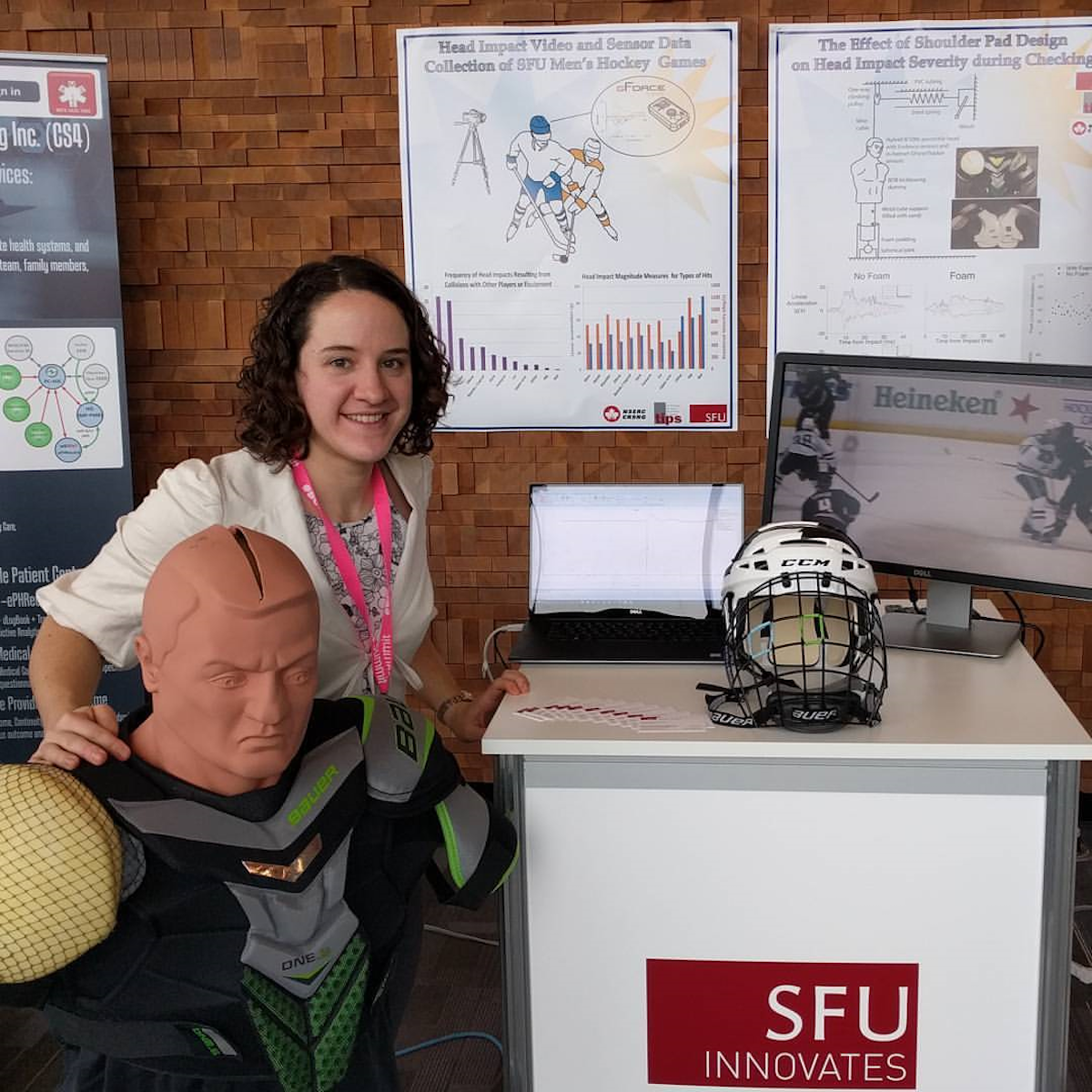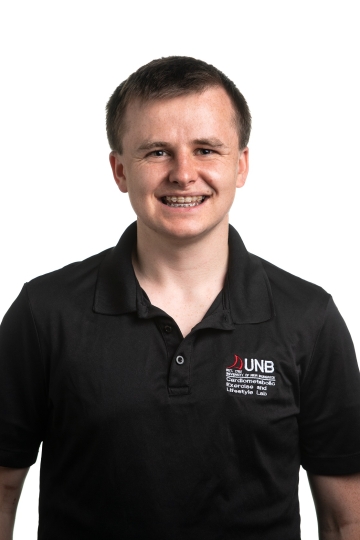Brigitte Potvin
Research Manager & Engineer
Injury Prevention and Mobility Laboratory, Simon Fraser University in British Columbia
Learn About My Career
Brigitte Potvin is a research manager and engineer for the injury prevention and mobility laboratory of Simon Fraser University.
I was born/grew up in: Toronto, Ontario, Canada
I now live in: Burnaby, British Columbia, Canada
I completed my training/education at: I went to the University of Ottawa for my 2 undergrads in biomedical sciences and biomedical mechanical engineering (with COOP). I continued at the University of Ottawa for my Master’s in biomedical engineering. I also spent a few summer months travelling to Spain, Ecuador and Italy to study Spanish and Italian at the University of Salamanca, Galfir and Malaga-Si, The Instituto Superior in Ecuador/Galapagos Islands and Scuola Toscana in Florence.
Where do I begin? Every day for me is new and usually pretty exciting. Some days we are running experiments. One of my favourite pieces of equipment we use in the lab is big 2D moving platform that sits on 2 linear motors and moves at high speeds all around our floor depending how I program it. This is where we get people to stand in the middle and try to maintain their balance (they usually fall spectacularly). Don’t worry though, the platform is covered with mats. It’s not everyone who gets to make their bosses fall over repeatedly on purpose at their job! We also use motion capture cameras like they use in movie animations and sensors that can measure your movements and heart rate. We just got an eye tracking system to see where people look when they fall or do other activities. My job is to figure out how to use it and then analyze all the data it’s giving us with computer programming.
On the other hand, this platform system also breaks down quite often so it’s my job to find the problem and fix it, whether it’s a mechanical or electrical issue, or if it’s just because a push pin got wedged under the platform and is making weird noises as it moves. It’s really useful to have some handy-person skills, creativity and problem solving abilities to tackle these challenges!
Another part of my job is to gather information on head impacts in ice hockey. That means I get to go to hockey games every couple of weeks to record videos of the games. I also set up accelerometers (sensors that measure how fast your head is moving) in all the hockey players’ helmets. We sometimes bring the players back to the lab to be our test subjects when we’re working on equipment improvements or trying to make mechanical models of hockey players so we can hit those in all sorts of ways (ethically, we can’t ask the players to hit each other in the head so that we may study concussions).
When I’m not running experiments, I’m usually helping the students in our lab with their projects. A big part of my job is teaching them how to use all the technologies we have access to in the lab. I also help them learn how to analyze their data with different programming tools (like Excel, MatLab or Python) or different software specific to our equipment. We are a biomechanics lab, which means we try to understand how the human body moves in different conditions. Math, physics and mechanics and biology are all important subjects to understand! But it’s hard to know everything all the time, so being able to do a little problem solving is definitely useful! I’m typically the go-to person in our team when someone has a problem that needs a solution. I try to see the different components of a problem, maybe do a little background research, and try to find a few ideas to address my current challenge. If it’s a programming error, chances are there is a missing or extra comma somewhere.
It doesn’t stop there though. Sometimes I’m asked to make nice graphics for presentations, write papers to publish in science journals, or sew some pockets onto a dozen pairs of shorts for experiments. I also organize lab visits for students, interview new lab recruits, manage a team of volunteers, and write grant reports for groups that give us funding. In July 2018 I’ll be attending a conference in Dublin, Ireland. Here I’ll be chatting with and learning from other researchers and technology companies. It’s an exciting place to be working!
I think people around me always thought I would end up in medical school when I was in high school because I got good grades and had an interest in biology and medicine. I wasn’t opposed to the idea but I also didn’t realize at the time how many medically related careers there were outside of being a doctor.
I found my interest in biomedical engineering when I volunteered to help at a hospital in Toronto for a career day event. I was taking students to listen to different health professionals speak about their careers. One of the presenters began talking about prosthesis designs for people with various amputations or limb disorders. He talked about how it was difficult for kids with prostheses since they were still growing and sometimes these things looked a little intimidating. Then he showed the group some different color options for an artificial leg and I thought it was the coolest thing. Combining engineering, science and art all at once to improve the life of someone seemed like an awesome career path! Turns out I would meet this person again 10 years later at the University of Ottawa where I was studying and where he worked in a research lab. It’s a small world!
After high school I started my university career in biomedical sciences (with a minor in Spanish as an excuse to travel!). Two years into my program, the University of Ottawa started a new biomedical mechanical engineering program but I wasn’t ready to switch right then. When I finished my first undergraduate degree, I decided to pursue this one since it seemed to align with what I wanted to do in the future. Turns out my science and physiology background was extremely useful in this engineering degree.
My current career isn’t directly related to prostheses like I thought it might be but I am learning so many things and helping others along the way and I’ve only just started. Artistic prostheses design isn’t off the table yet! I’ve got some ideas brewing.
The goal of my research lab is to prevent injuries in older adults and athletes. Some of the injuries we deal with have serious consequences for them and their families. If I can help reduce the severity of some of these injuries, then I am glad to have had a positive impact on their lives.
I’m also really happy to pass on my knowledge and help my fellow lab members. Many are learning and acquiring new skills during their university career before they embark on their future careers in health sciences, kinesiology and engineering. It’s a great feeling to see these students succeed and become more confident in their technical skills, communication abilities and research aptitudes.
I really like all the variety and challenges I face at work and I appreciate that my job allows me to use all my skills (academic or otherwise), creativity and problem solving abilities. It’s a position where sometimes I’m at a desk, sometimes I’m crawling around the lab assembling equipment, and sometimes I’m giving presentations to the health ministers of the province. It’s definitely not a boring career and I am learning new things every day!
We all know that our population is getting older and it is crucial that we try to keep our elders healthy and independent for as long as possible. The main focus in our research lab is to find ways help seniors as they age as well as their family and their care givers. We are doing this by developing injury prevention technologies (e.g., hip protectors or impact absorbing flooring for their homes). We also help by educating them about risks and strategies to avoid falls or fall-related injuries. There are scary statistics out there that tell us if elderly seniors break a hip, they have 25% chances of dying. They also have a 50% chance of losing a significant level of mobility and quality of life after a fall. If we can prevent even one hip fracture from happening, then we have greatly improved the life of that person and those who care about them. Part of my job is to test the different types of hip protectors available on the market and inform the companies who make them if their product is good or not (you would be surprised at the range of performance in these things!)
I have lots of hobbies outside of work. I’m a big fan of Olympic weightlifting, dancing, running, playing board games, reading, baking, gardening. I started learning to play the cello recently and I’m learning about woodworking. I recently made some pretty fabulous cutting boards and pepper grinders! (many thanks to my woodworking teacher)
Try everything, keep learning new skills no matter how random they seem. Take things apart (and take photos in the process so you can put them back together correctly), meet all sorts of people with both similar and different interests to yours, seek out opportunities and have fun! Although learning all you can in school is definitely an asset, there’s a whole world outside those doors!
What I do at work
Where do I begin? Every day for me is new and usually pretty exciting. Some days we are running experiments. One of my favourite pieces of equipment we use in the lab is big 2D moving platform that sits on 2 linear motors and moves at high speeds all around our floor depending how I program it. This is where we get people to stand in the middle and try to maintain their balance (they usually fall spectacularly). Don’t worry though, the platform is covered with mats. It’s not everyone who gets to make their bosses fall over repeatedly on purpose at their job! We also use motion capture cameras like they use in movie animations and sensors that can measure your movements and heart rate. We just got an eye tracking system to see where people look when they fall or do other activities. My job is to figure out how to use it and then analyze all the data it’s giving us with computer programming.
On the other hand, this platform system also breaks down quite often so it’s my job to find the problem and fix it, whether it’s a mechanical or electrical issue, or if it’s just because a push pin got wedged under the platform and is making weird noises as it moves. It’s really useful to have some handy-person skills, creativity and problem solving abilities to tackle these challenges!
Another part of my job is to gather information on head impacts in ice hockey. That means I get to go to hockey games every couple of weeks to record videos of the games. I also set up accelerometers (sensors that measure how fast your head is moving) in all the hockey players’ helmets. We sometimes bring the players back to the lab to be our test subjects when we’re working on equipment improvements or trying to make mechanical models of hockey players so we can hit those in all sorts of ways (ethically, we can’t ask the players to hit each other in the head so that we may study concussions).
When I’m not running experiments, I’m usually helping the students in our lab with their projects. A big part of my job is teaching them how to use all the technologies we have access to in the lab. I also help them learn how to analyze their data with different programming tools (like Excel, MatLab or Python) or different software specific to our equipment. We are a biomechanics lab, which means we try to understand how the human body moves in different conditions. Math, physics and mechanics and biology are all important subjects to understand! But it’s hard to know everything all the time, so being able to do a little problem solving is definitely useful! I’m typically the go-to person in our team when someone has a problem that needs a solution. I try to see the different components of a problem, maybe do a little background research, and try to find a few ideas to address my current challenge. If it’s a programming error, chances are there is a missing or extra comma somewhere.
It doesn’t stop there though. Sometimes I’m asked to make nice graphics for presentations, write papers to publish in science journals, or sew some pockets onto a dozen pairs of shorts for experiments. I also organize lab visits for students, interview new lab recruits, manage a team of volunteers, and write grant reports for groups that give us funding. In July 2018 I’ll be attending a conference in Dublin, Ireland. Here I’ll be chatting with and learning from other researchers and technology companies. It’s an exciting place to be working!
My career path is
I think people around me always thought I would end up in medical school when I was in high school because I got good grades and had an interest in biology and medicine. I wasn’t opposed to the idea but I also didn’t realize at the time how many medically related careers there were outside of being a doctor.
I found my interest in biomedical engineering when I volunteered to help at a hospital in Toronto for a career day event. I was taking students to listen to different health professionals speak about their careers. One of the presenters began talking about prosthesis designs for people with various amputations or limb disorders. He talked about how it was difficult for kids with prostheses since they were still growing and sometimes these things looked a little intimidating. Then he showed the group some different color options for an artificial leg and I thought it was the coolest thing. Combining engineering, science and art all at once to improve the life of someone seemed like an awesome career path! Turns out I would meet this person again 10 years later at the University of Ottawa where I was studying and where he worked in a research lab. It’s a small world!
After high school I started my university career in biomedical sciences (with a minor in Spanish as an excuse to travel!). Two years into my program, the University of Ottawa started a new biomedical mechanical engineering program but I wasn’t ready to switch right then. When I finished my first undergraduate degree, I decided to pursue this one since it seemed to align with what I wanted to do in the future. Turns out my science and physiology background was extremely useful in this engineering degree.
My current career isn’t directly related to prostheses like I thought it might be but I am learning so many things and helping others along the way and I’ve only just started. Artistic prostheses design isn’t off the table yet! I’ve got some ideas brewing.
I am motivated by
The goal of my research lab is to prevent injuries in older adults and athletes. Some of the injuries we deal with have serious consequences for them and their families. If I can help reduce the severity of some of these injuries, then I am glad to have had a positive impact on their lives.
I’m also really happy to pass on my knowledge and help my fellow lab members. Many are learning and acquiring new skills during their university career before they embark on their future careers in health sciences, kinesiology and engineering. It’s a great feeling to see these students succeed and become more confident in their technical skills, communication abilities and research aptitudes.
I really like all the variety and challenges I face at work and I appreciate that my job allows me to use all my skills (academic or otherwise), creativity and problem solving abilities. It’s a position where sometimes I’m at a desk, sometimes I’m crawling around the lab assembling equipment, and sometimes I’m giving presentations to the health ministers of the province. It’s definitely not a boring career and I am learning new things every day!
How I affect peoples’ lives
We all know that our population is getting older and it is crucial that we try to keep our elders healthy and independent for as long as possible. The main focus in our research lab is to find ways help seniors as they age as well as their family and their care givers. We are doing this by developing injury prevention technologies (e.g., hip protectors or impact absorbing flooring for their homes). We also help by educating them about risks and strategies to avoid falls or fall-related injuries. There are scary statistics out there that tell us if elderly seniors break a hip, they have 25% chances of dying. They also have a 50% chance of losing a significant level of mobility and quality of life after a fall. If we can prevent even one hip fracture from happening, then we have greatly improved the life of that person and those who care about them. Part of my job is to test the different types of hip protectors available on the market and inform the companies who make them if their product is good or not (you would be surprised at the range of performance in these things!)
Outside of work I
I have lots of hobbies outside of work. I’m a big fan of Olympic weightlifting, dancing, running, playing board games, reading, baking, gardening. I started learning to play the cello recently and I’m learning about woodworking. I recently made some pretty fabulous cutting boards and pepper grinders! (many thanks to my woodworking teacher)
My advice to others
Try everything, keep learning new skills no matter how random they seem. Take things apart (and take photos in the process so you can put them back together correctly), meet all sorts of people with both similar and different interests to yours, seek out opportunities and have fun! Although learning all you can in school is definitely an asset, there’s a whole world outside those doors!
When I was a student I enjoyed:
- Art
- Home Economics/Family Studies
- Math
- Music
- Foods & Nutrition
- Physical Education/Health
- Science
When I was a student, I would describe myself as someone who:
- Enjoyed doing things on my own
- Liked helping people
- Enjoyed working with my hands
- Engaged in volunteer activities
- Was really creative
- Felt great satisfaction in getting good grades
- Liked to design or build things
- Was motivated by success
- Liked reading
- Felt at home in the outside, natural environment
- Played video games
- Wasn't sure what I wanted to do
- Liked taking things apart to see how they worked
- Engaged in activites such as fishing, berry picking and hunting
Related Topics
Explore More Career Profiles
-
Brianna Lummerding
Career Profiles
Agronomic Innovation Manager
I look after all things related to soil management for a group of retailers. -
Li Tan (he/him)
Career Profiles
Molecular Lead
I coordinate the day-to-day operations in the DNA Extraction Lab. -
Tyler Morhart (video)
Career Profiles
Scientist, Beamline Responsible - SyLMAND
I am responsible for the SyLMAND beamline at the Canadian Light Source synchrotron facility. -
Li Tan (Video)
Career Profiles
Molecular Lead
I coordinate the day-to-day operations in the DNA Extraction Lab. -
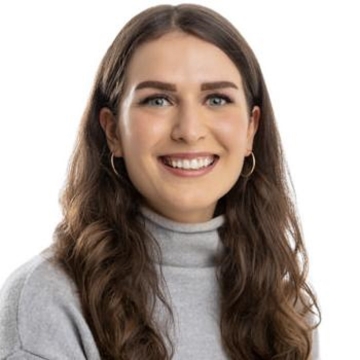
Rashell Featherstone (she/her)
Career Profiles
Senior Program Associate
I coordinate projects for the development of new products at STEMCELL. -
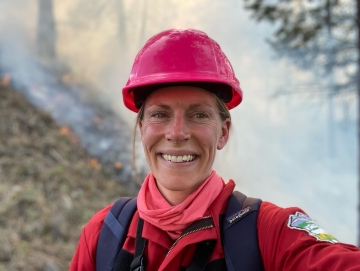
Kira Hoffman (she/her)
Career Profiles
Postdoctoral Researcher/Fire Ecologist
I am a researcher at both a university and a not-for profit organization where I am gaining experience to become a senior researcher. -
Zoë Ehlert (Video)
Career Profiles
Manager, Marker Assisted Breeding
I lead a team that develops canola crops by breeding plants with traits we are looking for. -
Zoë Ehlert
Career Profiles
Manager, Marker Assisted Breeding
I lead a team that develops canola crops by breeding plants with traits we are looking for. -
Jennifer Baltzer (she/her)
Career Profiles
Professor and Canada Research Chair in Forests and Global Change
I work at a university, teaching students and conducting research on the impact of climate change on forests in Canada and around the world. -
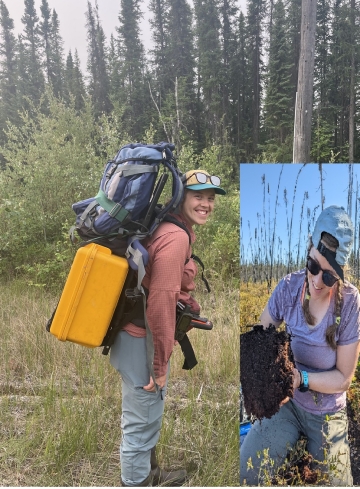
Caitlyn Lyons (she/her)
Career Profiles
Ph.D. Candidate
I am working towards my PhD and studying the forests in the Northwest Territories. -
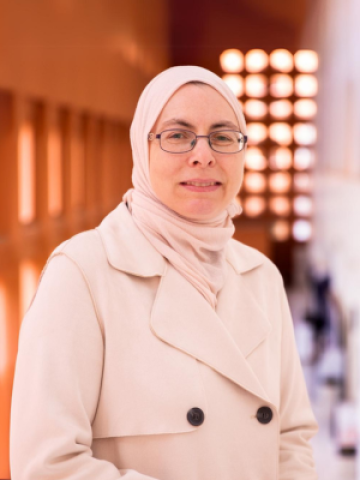
Joann Whalen
Career Profiles
Professor at the Faculty of Agricultural and Environmental Sciences,
I teach advanced courses on how to manage soils to produce healthy, nutritious food and maintain healthy ecosystem functions.
